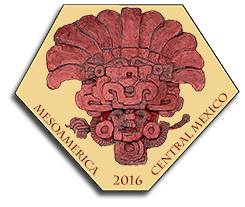Ancient Zapotec Country
November 18


San Pablo Villa de Mitla was our first stop. Small but tidy village depends mainly on tourism. People come here to see the ancient Zapotec palace, or rather its small remains. This site differs from other archeological places we visited before. Mitla lays in the valley, not on the mountaintop or the slope. There are no pyramids here, only the pre-Hispanic buildings can be found here. The palace has the finest Zapotec geometric patterns and murals. It was still inhabited when the Spaniards arrived, but soon after their arrival has been destroyed. Foundation and materials from a pagan temple were used by the Spanish to build the Church of San Pedro.




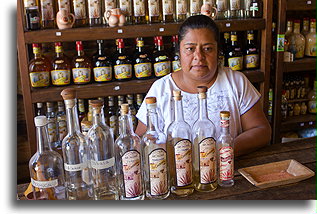
We stopped in Mitla to fill up water tanks and to buy Mezcal, a local liqueur made from the agave plant. We opted for a bottle with worm in the bottom. Tellingly proverb regarding this alcoholic beverage stuck to my mind, “Para todo mal Mezcal, para todo bien también” or “For all bad Mezcal, for all good too.”


At noon, we found ourselves in the sleepy neighboring village of Xaaga (pronounced Saaga) only a few kilometers from Mitla. While in the area, most of the people go to see hot springs Hierve el Agua, we opted for ancient rock paintings. This is little known place, only locals know the exact location therefore, we needed a guide. It proved to be an extremely easy task. It took me no more than 5 minutes to find one. I approached a group of people standing in the shade. After a short conversation, for 100 pesos, one of the men who identified himself as Javier agreed to go with us. He guided as perfectly. After 10-minute drive and another 20 on foot, we were standing at the foot of the mesa. The rock shelter was visible above. I was sure this is was as close as we can get, but our guide continued the climbing up. This was vertical wall climbing, luckily not for long. I must admit that Javier was overweight, but he managed to climb up to the top without issues.



The rock art was in mixed condition. Some recent damages by human hand were clearly visible. It is so common among visitorshard to say whythat they often feel obligated to make some corrections to the prehistoric art, or simply to engrave the names of their loved ones. On the rock, we found ancient palm contours, human figures representing hunters, shamans, an animal that our guide described a “dinosaur,” and even a snake. This place reminded us Mesa el Carmen on Baja. Both groups of paintings were definitely the remaining of two independent cultures, the ones here in Xaaga looked more primitive. Are they older than pinturas or rock paintings on the Baja peninsula? It is hard to say. There is no simple answer to this question.
Next, we stopped for a few moments at the ruins of Zapotec settlement known today as Lambityeco. The place is just on the road between Mitla and Tule. There is not much to see here, only two out of almost 200 structures have been restored. Anyway, it is an interesting place because of the sculptures found here.




Sculptured faces found in Tomb 6 represent a couple buried there, a man by the name of One Tremor and woman Ten Cane. Figures are very realistic. This is a masterpiece of the pre-Hispanic Zapotec art. While visiting this place, we have learned that among bones found in the grave were no femurs. Lambityeco reliefs depict a noble man or Coqui carrying femur in his hand. That fact is interpreted that femurs removed from the tombs were used as a symbol of the inherited title of Coqui.
Just before sunset, we found another Zapotec ruins called Dainzu. We could explore this place on our own. We were able to walk anywhere we wanted, no designated paths, no fences, no other tourists around.
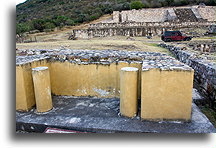
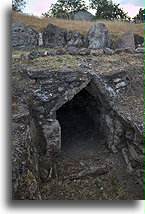
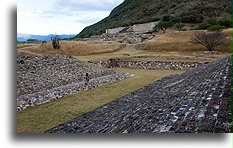
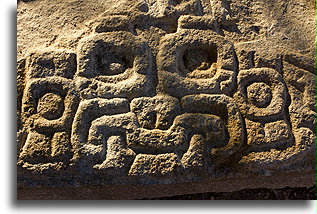
Dainzu meaning “Hill of Cactus Plants” reached its zenith between 600 BC and AD 200. Settlement built on a hillside faced the west. Some tombs, religious buildings and a ball court have been restored. The most interesting of them is Templo Amarillo or Yellow Temple, a small stone structure with front patio and two columns. The entire building was originally painted yellow, what indicates its religious significance.

